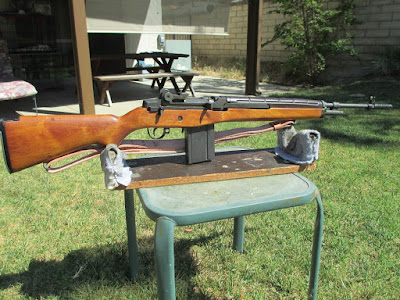Many off roaders are also firearms users and owners. I find that off roaders understand the utility of a firearm and appreciate the mechanical ingenuity and craftsmanship that goes into the design and fabrication of a fine firearm.
With that in mind may I present two firearms, linked by a common purpose, one initially thought to be a failure that went on to a new purpose 40 years after ceasing production; the other such a success that is once known as "the free world's right arm" but now exists only in the hands of minor military powers and game wardens.
The U.S. Army sought a replacement for the WW2 era M1 rifles in use in the '50s. After a long and protracted series of prototypes and evolutionary dead-ends, two choices for the new Army rifle remained: the T44, a distant cousin to the M1 rifle and the FAL, a Belgian designed rifle tested as the T48.
Money was on the T48 as the next rifle for the U.S. military. 500 were built by the U.S. gun manufacturer, Harrington and Richardson, and issued to soldiers at Ft. Benning Ga and Ft. Richardson Ak for extensive testing along with the T44. Much to the surprise of many, the T44 was competitive and in the end it was selected as the M14.
The M14's production life was short, the rifle was controversial in service, and production was abruptly ended in 1964 in favor of the M16. The M14 was gradually withdrawn from front line service and by the time I entered the Army in 1977, it existed only in the hands of the Navy and specialists in the other services. Many were cut up and melted down under the direction of the Clinton administration, many more given to allies such as Israel, Ethiopia, and the Baltic republics. Law enforcement agencies were permitted to requisition M14s for official use also. So many M14s were destroyed or given away that by 2000 less than 50,000 out of 1.5 million produced still remained in government hands.
The FAL was used by many military forces around the world and was seen in use in conflicts from Southern Africa to the Falkland Islands. It is reliable and reasonably accurate but heavy and out of step with modern mechanized forces and for urban warfare. Its use by first and second world military formations has just about ended. Most have been scrapped, some re purposed in Africa as game warden arms in the fight against poachers.
I am fortunate to own examples of both models of the rifles. |
 |
| The civilian version of the M14 - semi automatic only. Usually known as the M1A to signify its civilian use. Popular with hunters, target shooters, and collectors. |





No comments:
Post a Comment